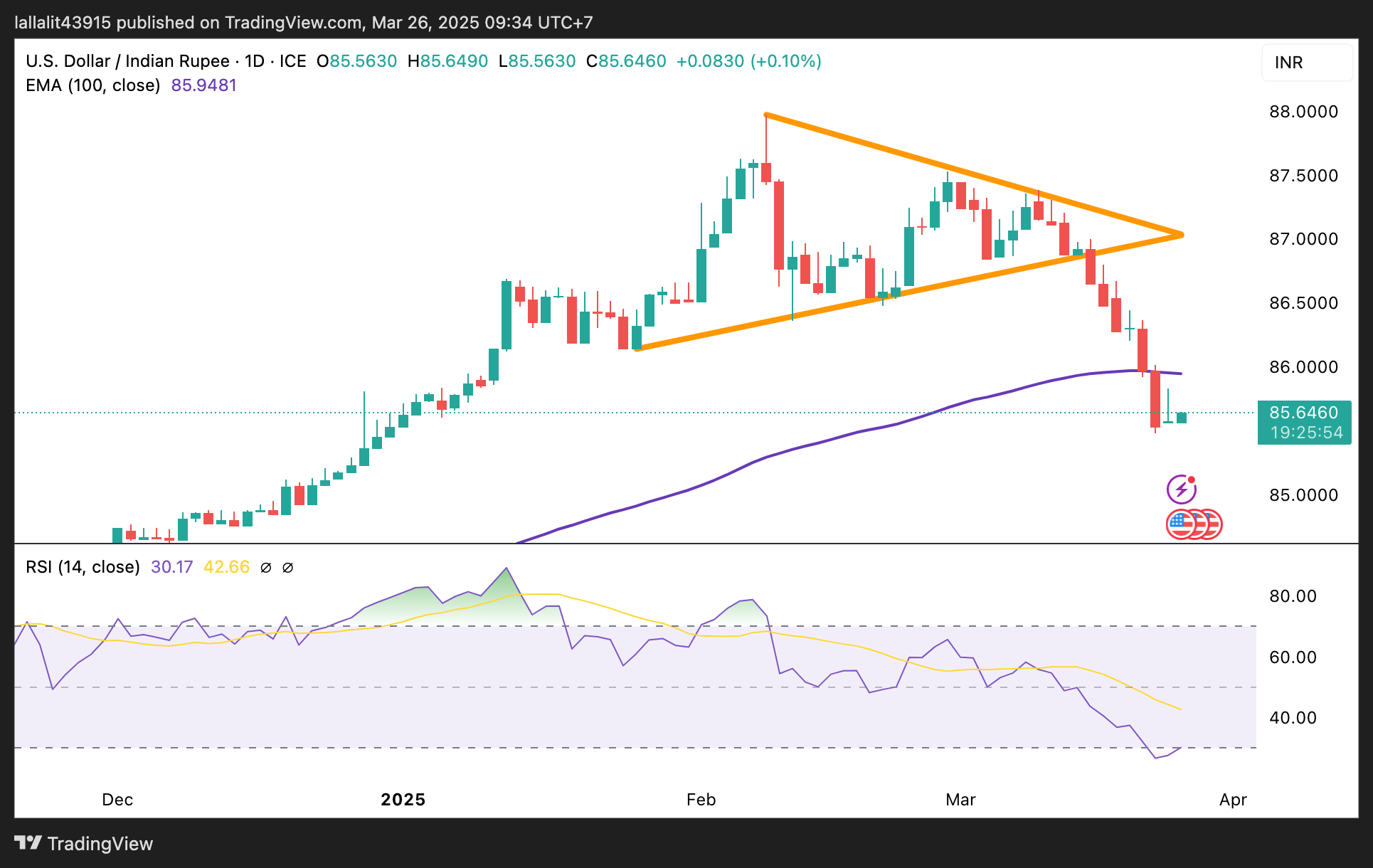- The Indian Rupee weakens in Wednesday’s Asian session.
- A rise in month-end US Dollar demand and higher crude oil prices weigh on the INR.
- Positive domestic equity trends and fresh foreign investments might cap the pair’s upside.
The Indian Rupee (INR) loses momentum on Wednesday. Month-end US Dollar (USD) demand from local oil companies and importers, coupled with the Greenback’s recovery against major currencies, undermines the Indian currency. Additionally, extended gains in crude oil prices might weigh on the INR as India is the world’s third-largest oil consumer.
On the other hand, the rise in Indian stock markets with foreign institutional investors (FIIs) back into buying mode lifts the local currency. The US MBA’s Mortgage Applications and Durable Goods Orders are due later on Wednesday. Also, the Federal Reserve (Fed) officials are scheduled to speak, including Neel Kashkari and Alberto Musalem.
Indian Rupee edges lower against the USD amid firm US Dollar demand
- “There was month-end demand, particularly from oil companies, and likely dollar demand from the Reserve Bank to close its open short positions due in March,” said Anil Bhansali, head of treasury, Finrex Treasury Advisors.
- US President Donald Trump said early Wednesday that he is set to implement copper import tariffs within weeks, per Bloomberg.
- The US Consumer Confidence Index has fallen for the fourth consecutive month to a 12-year low, dropping to 92.9 in March, the Conference Board showed Tuesday. This figure came in lower than the estimation of 94.5.
- The US New Home Sales rose 1.8% to a seasonally adjusted annual rate of 676,000 units in February, the Commerce Department’s Census Bureau revealed on Tuesday. The sales pace for January was revised up to a rate of 664,000 units from the previously reported 657,000 units.
USD/INR’s bearish outlook remains in play under the 100-day EMA
The Indian Rupee softens on the day. The USD/INR pair keeps the bearish vibe, characterized by the price holding below the key 100-day Exponential Moving Average on the daily timeframe. However, the 14-day Relative Strength Index (RSI) moves below the 30.00 mark, indicating oversold conditions and warranting some caution. This suggests that further consolidation or a temporary recovery is on the cards.
The low of January 6 at 85.60 acts as an initial support level for USD/INR. Sustained bearish pressure could drag the pair lower to 84.84, the low of December 19, 2024. Further south, the additional downside filter to watch is 84.22, the low of November 25, 2024.
On the upside, the psychological level and the 100-day EMA in the 85.95-86.00 zone appear to be a tough nut to crack for bulls. A decisive break above this level could set its sights on the next upside targets at 86.48, the low of February 21, en route to 87.00, the round figure.


